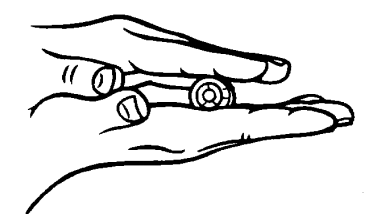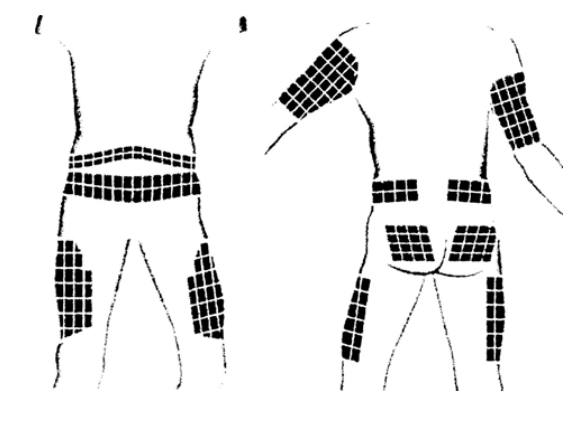Injections (subcutaneous)
Article Translations: (Spanish) (Hmong) (Somali)
Your child needs to take a medicine by subcutaneous (just under the skin) injection. This is often called a "sub-"injection.
How should I prepare my child?
First get everything ready. Explain briefly what you are about to do. Be truthful about discomfort but be positive about the benefits
of the medicine. Once you have explained, proceed quickly. Delay can increase anxiety.
If you think the child will not be able to hold still, have someone hold him or her.
Distraction, such as squeezing someone's hand, humming, counting, or blowing bubbles may be helpful. Keep the child involved in talking or singing. Relaxation techniques may also be helpful. Comfort your child afterward. Reassure that the medicine is not a punishment. Give lots of praise.
As your child gets older, he or she may show interest in doing part or all of the procedure. Encourage independence but do not push it before the child is ready.
How do I prepare the medicine?
Be sure to follow the checked directions.
- Wash your hands with soap and water for at least 15 seconds, rubbing all surfaces briskly, or use an alcohol hand sanitizer.
- Gather supplies:
• Anti-bacterial soap and water with cotton ball to clean the site
• alcohol wipes for cleansing the site (if ordered by doctor)
• cotton ball for use after injection(if desired)
• vial of medicine
• ___ ml syringe with a ___ inch needle
• sharps container for needles, such as:
- a special container for this purpose
- coffee can with cover
- plastic detergent bottle with lid - Check the date on the vial to make sure the medicine has not expired. If the medicine has changed color, or contains flakes or lumps, discard it and use a new vial.
- If the vial is cold, warm it by holding it in your hand, or letting it stand at room temperature for 1 hour. If the medicine must be mixed, roll the vial in your hands. Do not shake it.

- The first time you use a vial, snap off the plastic cover. Do not remove the stopper.
- Scrub the stopper with an alcohol wipe and let it dry.
- Draw air into the syringe by pulling the plunger back to the line that marks the dose you need to give.
- Carefully remove the needle cover. Do not touch the needle. Put the needle through the stopper and push the air into the vial.

- Turn the vial upside down. Pull the needle down so only the tip pokes through the stopper. This will allow you to withdraw the medicine without getting air.

- Pull back on the plunger and let the medicine flow into the syringe until it reaches the amount to be given.
- Check the syringe for air bubbles. The air is harmless, but too large an air bubble will reduce the dose. To remove air bubbles, follow the checked instructions below:
___ Gently push the solution back into the vial and measure the dose again.
___ Tap the syringe to make the bubble go to the top. Squirt the bubble into the vial. Measure the dose again. - Remove the needle from the vial. If you must lay the syringe down, carefully replace the needle cover first. Do not
allow the needle to touch anything.
Giving the injection
- Pick a site to give the injection. (See "Where should I give the injections?")
- Have your child lie or sit down and remove clothing from the injection site.
• Using a circular motion, clean the injection site with soap and water on cotton ball or alcohol wipe if ordered by doctor - Let it dry.
- Take off the needle cover and hold the syringe like a dart.
- With the other hand, pinch up a large area of skin where you cleaned it.
- With a quick motion, insert the needle into the skin at the angle checked below. Push the plunger slowly until the syringe is empty.

- Let go of the pinched-up skin and wait a few seconds, to prevent the medicine from leaking out.
- Quickly pull the needle out of the skin at the same angle and gently cover the injection site for several seconds with a cotton ball or clean tissue. Do not rub or push on the skin.
- Put the syringe and needle into the sharps container.
- Mark the site on an injection rotation chart if you are using one.
Where should I give the injections?
If injections are given often, it is important to use a different injection site each time. This allows the tissue to heal, prevents lumps and scar tissue, and helps the medicine absorb evenly. Choose from the sites shown.

You do not have to use all of the sites. Make sure that injection sites are at least one hand's width away from any joint.
What should I do with the sharps container?
When the container is full, seal it and label it "Household sharps." Disposal varies depending on the area you live in. Some communities have a household sharps collection program. To find out what you should do, check with your garbage collection company, pharmacy, or clinic.
What else do I need to know?
As your child grows, the injection angle may need to change. Ask the doctor or nurse about this.
Most medicines have side effects. Learn the side effects of your child's medicine and what to do if they occur.
You and your child should know the names and doses of all the medicines he or she is taking. Share this information with anyone involved in your child's health care.
Always make sure you have enough medicine on hand. Each time you refill your prescriptions, check to see how many refills are left. If no refills are left, the pharmacist will need 2 or 3 days to contact the doctor to renew the prescription.
Before giving the first dose, read the label. Be sure it is what was prescribed. After a refill, if the medicine looks different to you, ask your pharmacist about it before giving it.
Keep all medicines out of children's reach, locked up if possible. If the medicine is outdated, throw it away.
If too much or the wrong kind of medicine is taken, call Poison Control (toll-free 1-800-222-1222). If your child is unconscious or has a seizure, call 911.
When should I call the doctor?
- fever or chills
- lump, swelling, redness, or bruising at a site that does not go away
- side effects of the medicine that bother your child or you
Questions?
This is not specific to your child, but provides general information. If you have any questions, call the clinic or pharmacy.
This page is not specific to your child, but provides general information on the topic above. If you have any questions, please call your clinic. For more reading material about this and other health topics, please call or visit Children's Minnesota Family Resource Center library, or visit www.childrensmn.org/educationmaterials.
© 2024 Children's Minnesota
